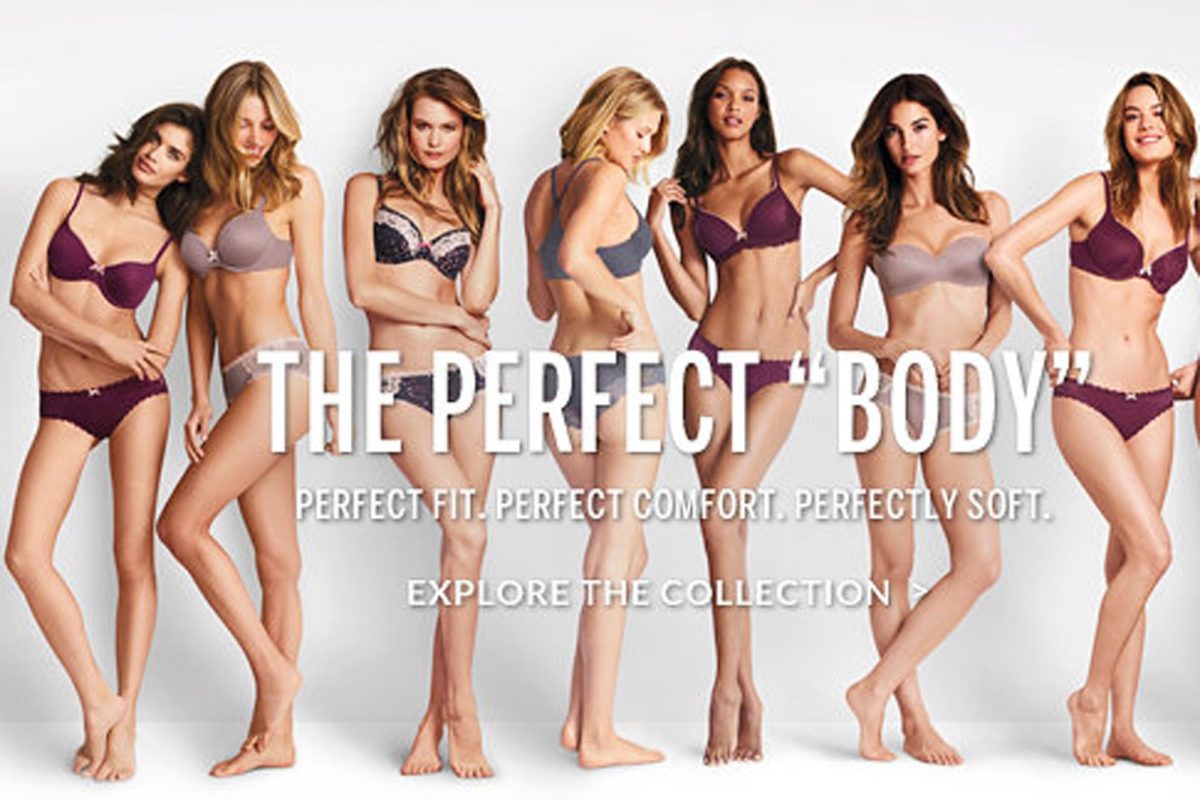When someone mentions the term “modern society” it’s hard not to picture our fast-paced, consumerism-driven culture – that is, apart from the crappy MTV reality shows and overused dog filter on Snapchat.

As we trudge through the 21st century with all forms of marketing imagery hurled our way – from McDonalds’ greasy new deals to the latest cringe tracks from wannabe boy-bands – we can’t help but occasionally get sucked in by the ever-alluring messages of media advertising.
An age-old controversy that continues to pervade (mainly young and impressionable) members of society to this very day is, sadly, the increasingly unattainable- and sometimes downright false- standards of beauty for women. In a world where society is dominated by the Insta-filtered face of Kylie Jenner and photoshopped images of Jennifer Lawrence (who admits to the unrealistic edits herself), young girls are jumping on the newest trends in fashion, cosmetics, and often unhealthy diet regimens to get that perfect, Hollywood-inspired appearance.

With sustained technological leaps over the decades, these anxiety-ridden body perceptions have found a home in a contentious medium of profit: plastic surgery. Facelifts, nose jobs, breast reductions, breast enhancements… you name it. The doctor’s knife has become such a frequent tool for fixing the perceived imperfections women find in their appearance (or as a means to obtaining the attributes to which they aspire), that it wouldn’t be surprising to have a cosmetic procedure for the rock-solid abs of Leonardo the Ninja Turtle.
The plastic surgery options available to choose from grow and grow, however a recent fad in particular has been making quite a few rounds throughout the internet – the option to surgically modify your genitals. Yep, it’s a thing.

While we’re all for women choosing to do with their bodies as they wish, what’s alarming is how prevalent this trend is among girls – some as young as the age of nine. With the advent of online pornography, which is becoming increasingly accessible over the years, girls are not only at the mercy of grossly exorbitant body and facial ideals, but are now beginning to question the appearance of their more intimate areas too. Plus, it doesn’t help that Barbie dolls targeted towards this demographic set a ridiculous standard for the “ideal” body image to this day, including anatomically false, hairless “lady bits”.
Genital surgery isn’t some new and innovative process – many have already undergone such procedures due to sexual discomfort, infection, or reconstruction (in the case of victims of genital mutilation). The operation is more properly termed as “labiaplasty”: the process of shaping and reducing the size of the inner vaginal lips. It’s also a popular option amongst new mothers who have just given birth, or many others who claim

they cause chafing against undergarments. However, driven by their frighteningly skewed perceptions of body image, the operation is now being sought after by adolescent, and even pre-pubescent, girls for purely cosmetic purposes.
A chairman for the British Society of Paediatric and Adolescent Gynaecology, Dr. Naomi Crouch, has admitted that the influx of young girls coming in and requesting cosmetic genital surgery is unnerving.
“Girls will sometimes come out with comments like, ‘I just hate it, I just want it removed,’ and for a girl to feel that way about any part of her body – especially a part that’s intimate and natural – is very upsetting,” she said.
The American College of Obstetricians and Gynaecologists committee (also known as A.C.O.G.) has gone so far as to suggest that perhaps these patients should undergo psychological screening for ‘body dysmorphia’ – a disorder of one’s obsession towards their perceived physical flaws. Dr. Katharine Phillips, who is Director at the Body Dysmorphic Disorder program at Rhode Island Hospital and Brown University, has stated that receiving such surgical treatment won’t alleviate one’s anxieties towards their genital appearance, and may even further exacerbate their apprehensions, issues and anxiety regarding intimacy.

It doesn’t help that surgeons are trying to make bank with this unsettling – yet increasingly popular – trend, with a cosmetic clinic in Canada even giving it the commercial term of “The Barbie Labiaplasty.” A disturbing name for such an operation, when you remember that – shocker! – Barbie doesn’t even have a hint of genitalia on that unrealistic, plastic hourglass figure of hers.
Hey, women should be free to experiment, care, and do what they want with their bodies, but it becomes a different issue when the under-developed minds of young, pre-teen girls fuss over their sexual image; ruing over whether their genitals look up-to-par with the airbrushed, porno-centric appearance.

It’s frightening how vulnerable this demographic is at a time where commercial and media images are more readily consumed with a Google search, a Facebook browse, and the vast number of digital advertisements snuck in-between. With so much information available literally at our fingertips, how are we to protect the impressionable minds of anxiety-ridden children in such an era?
Fortunately, the good news is this medium can be used for a wholly adverse mission: instilling a more frequent and healthier message about beauty and body ideals. Messages that don’t place photo-shopped celebrities on a pedestal of perfection and encourage women of all ages to strive for health rather than glamour.

We especially don’t need anyone convincing us the Photoshopped images that dominate our newsfeed are the gold standard, regardless of our individual physiology. Instead why not embrace diversity in body images, celebrate our uniqueness and individuality, and concentrate on empowering a healthy mind and body that can learn to love itself, warts and all?







